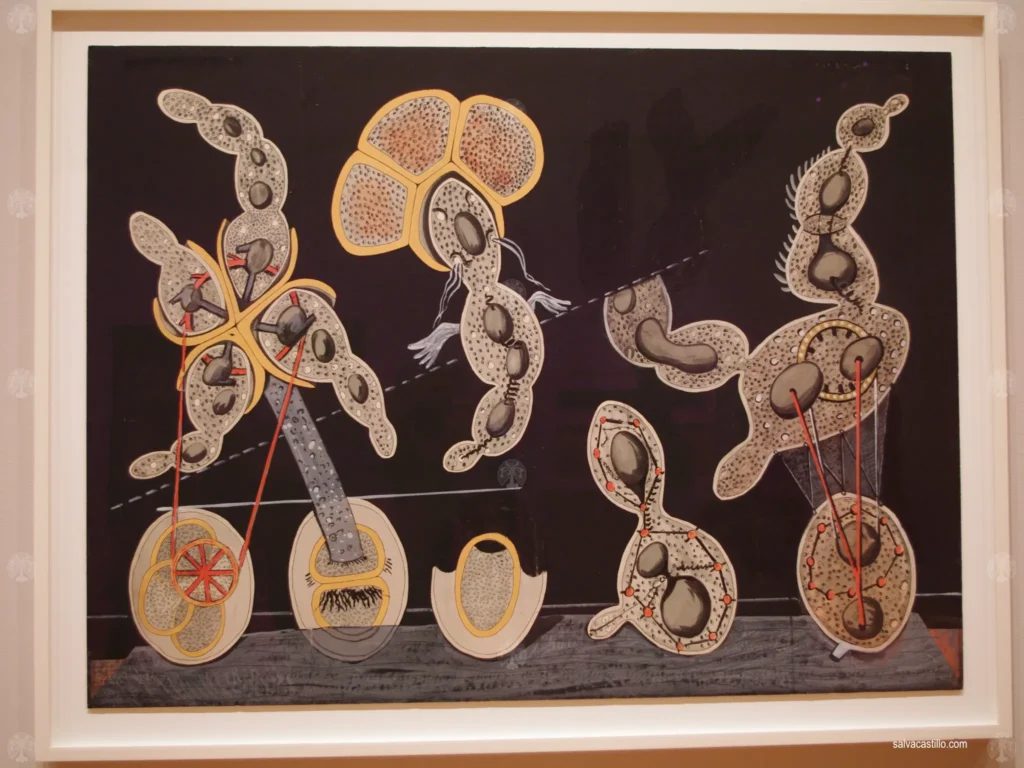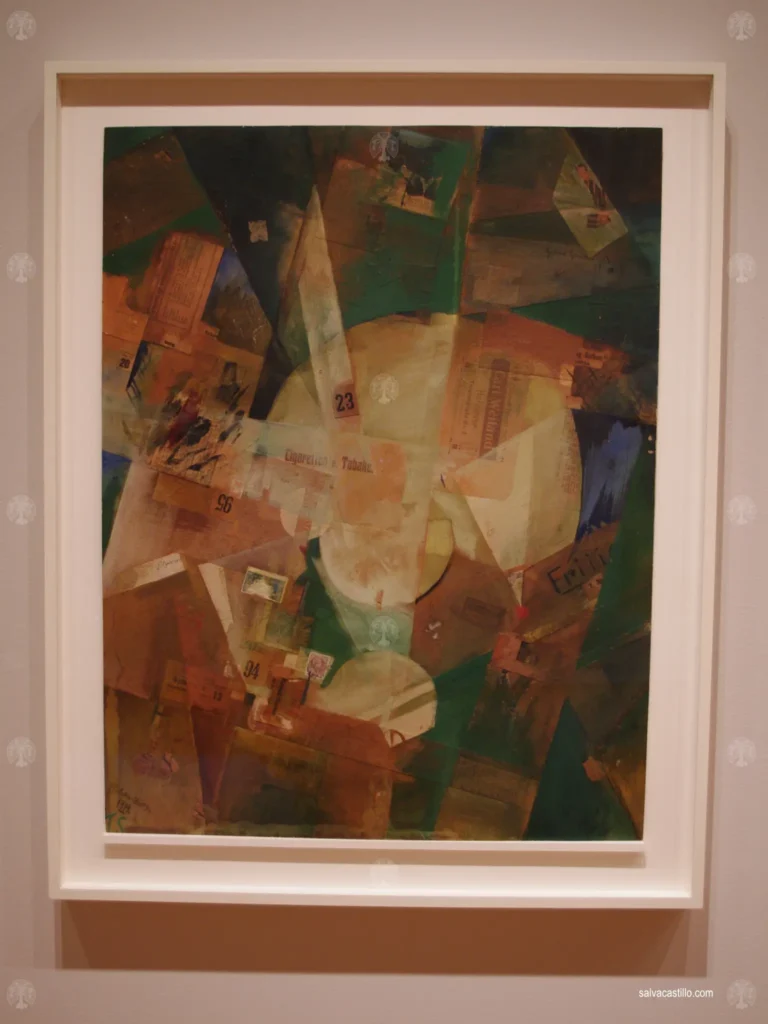The Museum of Modern Art (MoMA) is a leading cultural center located in the heart of Manhattan, New York, that has earned a worldwide reputation as one of the most influential contemporary art museums.
In 2004, due to the renovation of the museum, a good part of his collection was exhibited at the Neue Nationalgalerie in Berlin, in an exhibition called “Das MoMA in Berlín“. I missed it out, but years later life gave me the opportunity to enjoy the original.

I don’t understand art. And of modern art, even less than nothing. There are very famous works to which I do not find any attraction. Others, which directly seem to me to be a joke that got out of hand. And finally, we have those that I suspect are part of a money laundering cycle because if not, they have no explanation. Yes, banana with a band-aid, I’m looking at you.
On the other hand, there are works that catch me when I see them even though, rationally, I don’t find singular merit in them. They are just four scratches there on the paper. But they catch me. And I like to imagine what sparked to the artist in his head to conceive such a folly -genius, I wanted to say. I can’t help thinking, like so many other ignorant people, that I could have painted that on a sufficiently creative lysergic day. But as it turns out, it didn’t occur to me, but to that artist. Schopenhauer enlightens us:
"Therefore, the problem is not so much to see what no one has yet seen, but to think in the case of something seen by everyone what no one has yet thought."
As for the esoteric interpretations, hidden meanings, arcane symbology and other cosmic qualities attributed to some works of contemporary art, in general I find them easily forgettable. I find it curious to establish a recognizable pattern between an artist’s life circumstances and how that influenced his or her work. But I don’t subscribe to the fascination and idolization of an artist for some supposed moment of clairvoyance where the violet background represents the superego of the unconscious screaming to the cosmos the inherent futility of consciousness submerged in the deleterious magma. Of course, Woody Allen mastered in depicting such feeling.
The Sculpture garden
This outdoor space, designed by Philip Johnson in collaboration with landscape designer James Fanning, offers a serene and contemplative respite that complements the intensity of modern art within the museum.
Surrounded by the modern structures of MoMA, the garden becomes a perfect setting for the exhibition of sculptural works spanning diverse artistic currents and periods.
5th floor // 1880 – 1940
The fifth floor of the Museum of Modern Art (MoMA) is a space dedicated to the exhibition of a rich collection of contemporary art masterpieces. Encompassing diverse forms of artistic expression, this level offers visitors an immersive experience in the creativity and innovation that characterizes modern art. From paintings to sculpture to audiovisual media, MoMA’s fifth floor presents an eclectic overview that captures the diversity and evolution of art in the 20th and 21st centuries.
The fifth floor collection includes iconic works that have left an indelible mark on the history of contemporary art. Revolutionary paintings, such as Picasso’s “Les Demoiselles d’Avignon” reveal the breaking of paradigms and the exploration of new aesthetic territories. Emblematic sculptures, such as those by Giacometti and Calder, bring space to life with their three-dimensional presence, challenging conventions and redefining the possibilities of sculptural form.
502
Paul Cézanne’s “The Bather” is a masterpiece of Impressionism and an eloquent testament to the artistic mastery of this influential French painter. Painted between 1885 and 1887, the work is notable for its innovative approach to the depiction of the human body and surrounding nature. The central figure, a male bather, is captured in a monumental pose, fusing lines and colors in a unique way to convey a sense of three-dimensional form.

Cézanne’s color palette in “The Bather” reveals his skill in the application of tones and shades, creating a subtle luminosity that infuses the scene with life. The expressive strokes and bold brushstrokes show the transition from Impressionism to the later explorations of modern art. The interplay between light and shadow in the composition highlights Cézanne’s ability to reveal the structure and texture of skin and landscape, evidencing his tireless quest to capture the essence of reality through paint. “The Bather” is undoubtedly a milestone in Cézanne’s career and a jewel in the crown of Impressionist art.


“The Seed of the Areoi” by Paul Gauguin, painted in 1892, stands as a fascinating example of the post-impressionist artist’s masterpiece. Part of his Tahitian series, this work reveals Gauguin’s unique skill at merging reality with imagination and symbolism. The vibrant color palette, a hallmark of Gauguin’s style, immerses the viewer in a lush tropical landscape, where warm tones and intense contrasts create a mysterious and seductive atmosphere.
It presents a complex symbolic narrative, typical of Gauguin’s work. The central figure, a Tahitian woman, holds in her hands the “seed” that symbolizes fertility and the mystery of life. Iconographic elements, such as mythological figures and totems, add layers of meaning, inviting a profound interpretation of the relationship between humanity and nature. Gauguin, immersed in Tahitian culture and spirituality, uses painting as a medium to explore his personal vision of paradise and the connection between the divine and the earthly.
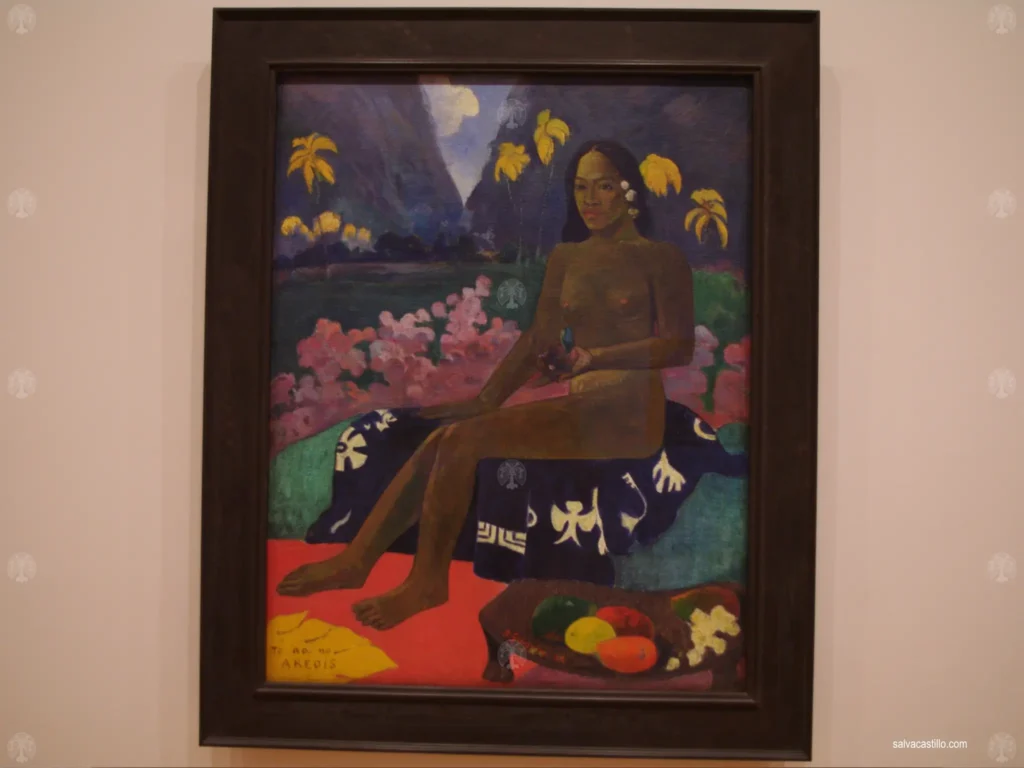
Gauguin’s distinctive technique, which incorporates bold contours and simplified forms, contributes to the sense of exoticism and dreaminess that permeates the work. The juxtaposition of stylized figurative and natural elements evokes a sense of primitive harmony, transporting the viewer to a paradisiacal universe. “The Seed of the Areoi” is, in essence, a window into Gauguin’s visionary mind and an artistic manifestation of his relentless search for spiritual essence and symbolic expression in painting.

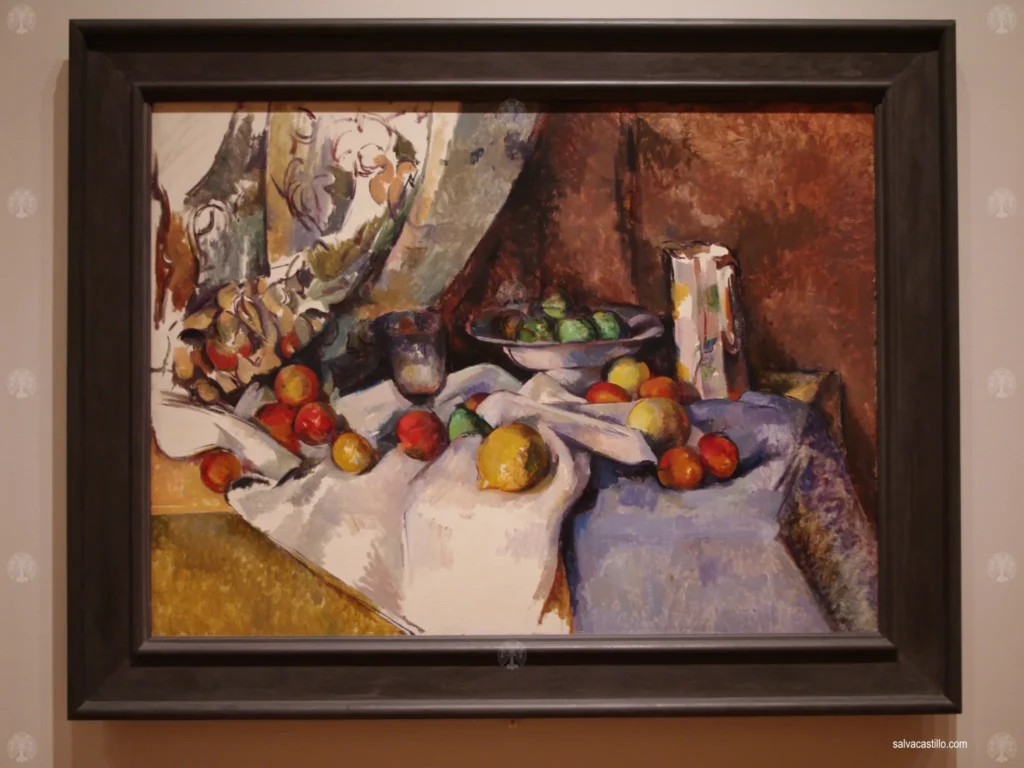


“Starry Night” by Vincent van Gogh, painted in 1889, stands as a masterpiece that encapsulates the artist’s unique and passionate vision. This iconic painting depicts a turbulent night sky over a quiet village, merging imaginary elements with reality. Van Gogh’s signature symphony of blue and yellow hues creates a vibrant and poignant atmosphere. The swirling stars and spiraling night sky reveal the artist’s emotional intensity, conveying a sense of cosmic restlessness.
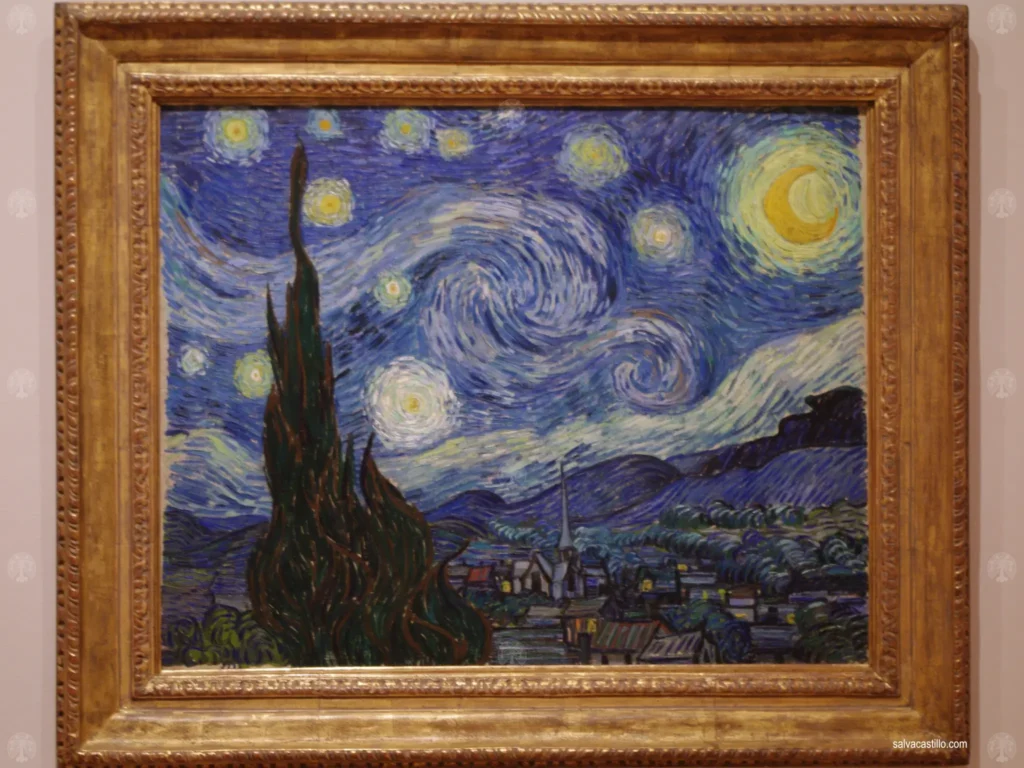
The expressive brushwork and palpable texture in “Starry Night” are representative of Van Gogh’s post-Impressionist style. The bold use of color and the sinuous structure of the sky capture the energy and emotional turmoil that was gripping the artist at that time in his life. The presence of the church and houses in the village contrasts with the tumultuous nature of the sky, creating a tension that adds narrative depth to the work. “Starry Night” is not only a visual expression of Van Gogh’s fascination with nature and the cosmos, but also a testament to his unique ability to capture human emotion in every brushstroke.
503
“Les Demoiselles d’Avignon“, painted by Pablo Picasso in 1907, marks a momentous milestone in the history of modern art. This Cubist masterpiece is characterized by the boldness of its stylistic approach and radical break with the artistic conventions of the time. Picasso presents five nude figures with masked faces, fusing African and Iberian influences in a depiction that challenges traditional notions of beauty and form. The geometric bodies and angular lines reflect the influence of African and Oceanic art, while the decomposition of forms reveals the emergence of Cubism, a movement that would transform the visual and conceptual perception of art in the 20th century. “Les Demoiselles d’Avignon” not only represents a seismic shift in Picasso’s stylistic evolution, but also acts as a catalyst for future artistic explorations, cementing his position as an undisputed icon of the artistic avant-garde.

“The Sleeping Gypsy“, painted by Henri Rousseau in 1897, is a work that stands out for its enigma and exoticism. Rousseau, self-taught in art, creates a dreamlike scene in which a gypsy woman lies in a deserted landscape, accompanied by a lion. The rich and vibrant chromatic palette reflects the artist’s fascination with the Orient and the representation of the wild. The gypsy woman, with her exuberant clothing, and the lion, a symbol of ferocity and serenity juxtaposed, form an intriguing contrast. Rousseau achieves a unique fusion of realism and imagination, creating a piece that captures attention for its mystery and its ability to transport the viewer into a dreamlike world. “The Sleeping Gypsy” endures as a jewel in the collection of naïve art, testifying to Rousseau’s ability to capture fantasy and reality in a timeless masterpiece.

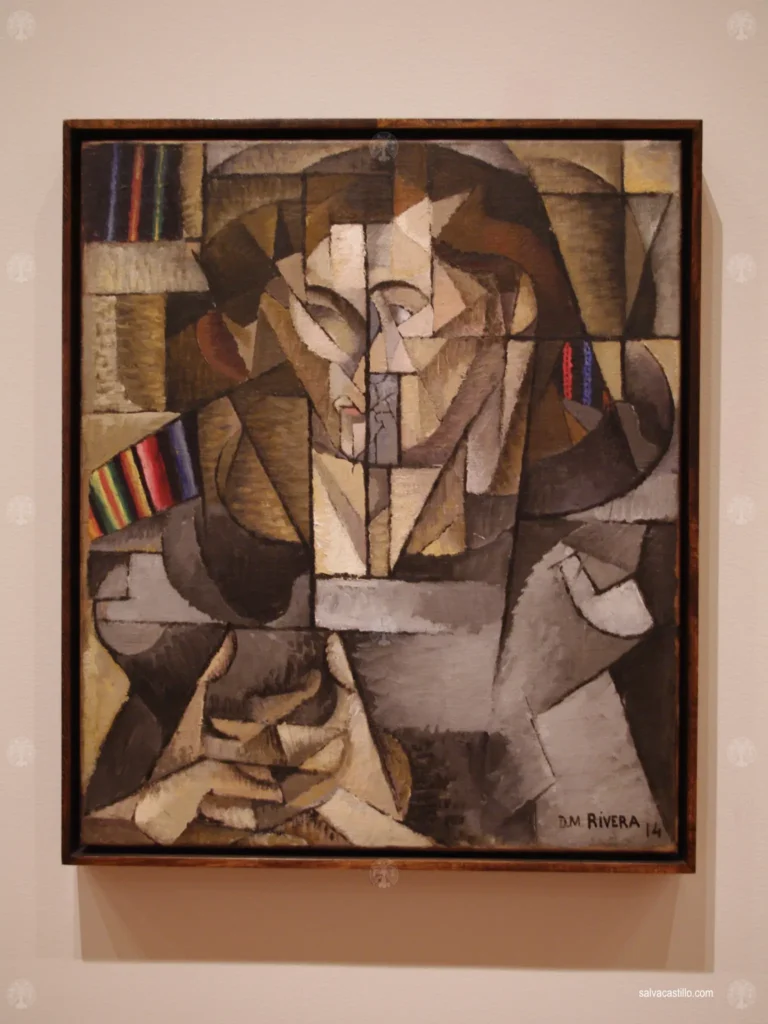
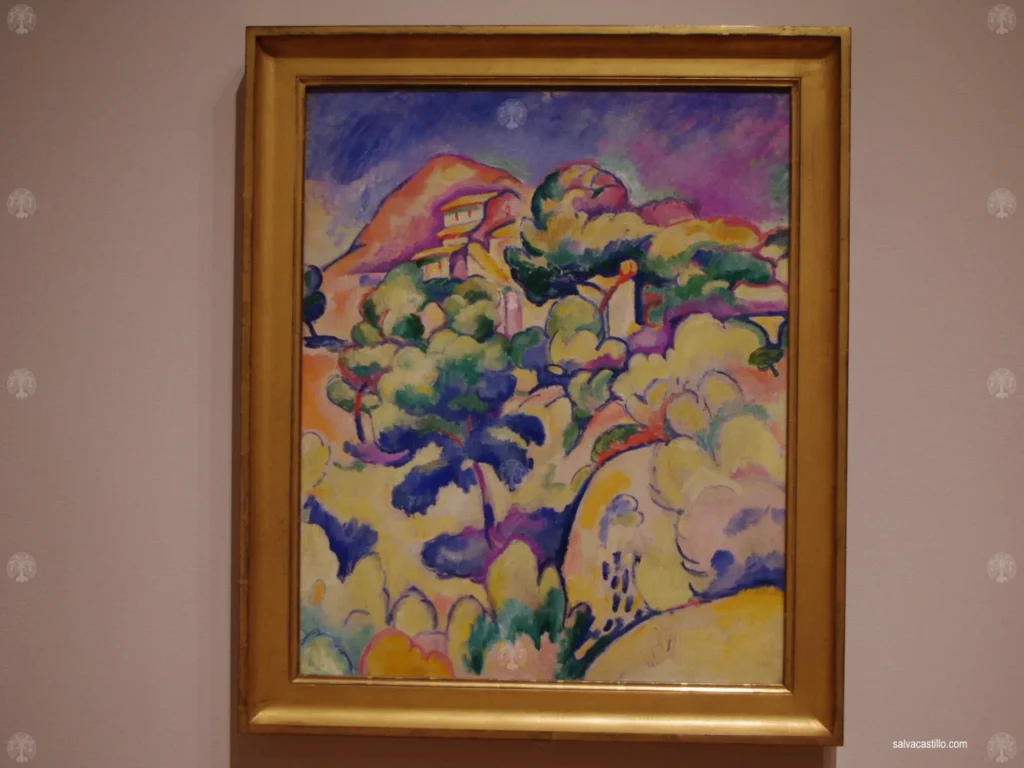


“Girl with Mandolin” is a masterpiece created by Pablo Picasso in 1910, it encapsulates the artistic revolution of Cubism. The painting presents the model Marcelle Humbert, known as Eva, broken down into geometric shapes and multiple facets. The mandolin, a central element, is simplified into angular lines and planes, reflecting the influence of African art on the Cubist aesthetic. The bold use of color and the decomposition of the human figure evidence Picasso’s break with traditional artistic conventions. “Girl with Mandolin” is emblematic of the analytical period of Cubism, where Picasso and Braque challenged conventional visual representation to explore the multiplicity of perspectives. This work is not only a testament to Picasso’s genius in his artistic exploration, but also an enduring icon that marked a fundamental shift in the course of modern art.


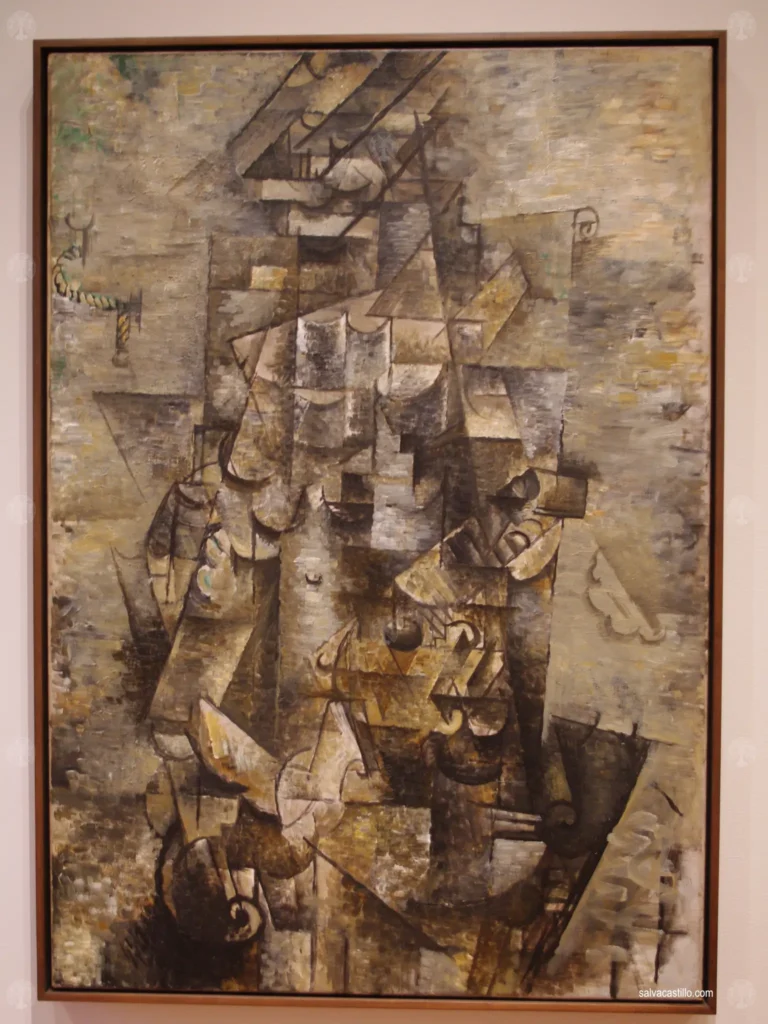
504
“Hope II“, painted by Gustav Klimt in 1907-1908, is a masterpiece that is part of his golden period and symbolizes the transition from symbolism to modernism. The painting features a pregnant woman in a setting that fuses allegorical, decorative and symbolist elements. The woman’s body is adorned with decorative motifs characteristic of Klimt, which are interwoven in an intricate and ornate design. The range of warm colors and the application of gold leaf, typical of Klimt’s distinctive style, create a sense of luxury and spirituality. The central figure, shrouded in an aura of mystery, reflects Klimt’s exploration of themes such as life, death and continuity through pregnancy. “Hope II” is not only a masterful display of Klimt’s technical skill and unique style, but also a thought-provoking piece about the human condition and the connection between life and hope.

“The Park” (1909-1910), a peerless work by Gustav Klimt, reflects his mastery in depicting nature and distinctive fusion of symbolist and modernist elements. Nine-tenths of “The Park” is a solid mass of foliage, so that were it not for the tree trunks and swaths of grass at the bottom, this composition would be entirely abstract. The careful attention to pattern and form, as well as the integration of decorative elements, are emblematic of Klimt’s unique style. “The Park” not only celebrates the beauty of nature, but also exhibits the masterful synthesis of ornamentation and artistic expression that characterizes the Viennese master’s work.
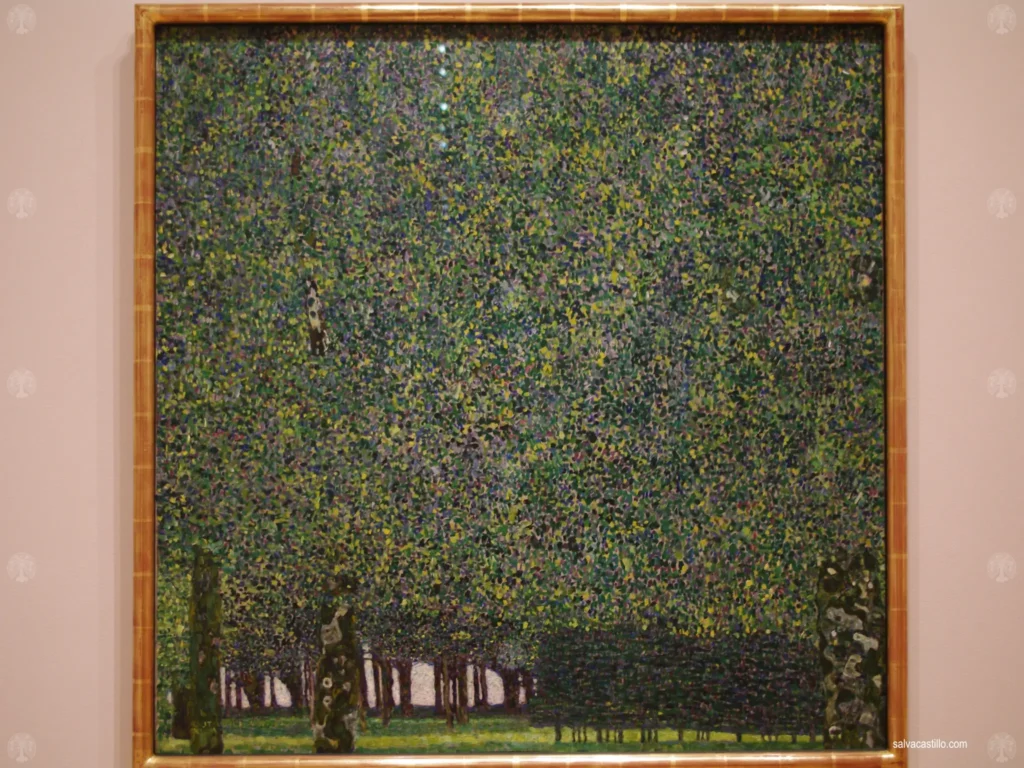
505
“I and the Village” a masterpiece created by Marc Chagall in 1911, represents a unique fusion of folk and modernist elements that capture the rich narrative of his childhood in Vitebsk, Belarus. The painting, made during the heyday of Cubism, depicts a complex interweaving of shapes and colors that create a playful, dreamlike scene. Chagall uses the technique of visual collage, defying conventional artistic conventions and offering a symbolic representation of the duality between the real and imaginary worlds. The presence of the floating figure, the goat, the face and other iconic elements connects the work to Chagall’s folkloric traditions and personal experiences, providing a unique window into his artistic vision and complex sense of identity rooted in the folklore and rural life of his youth.

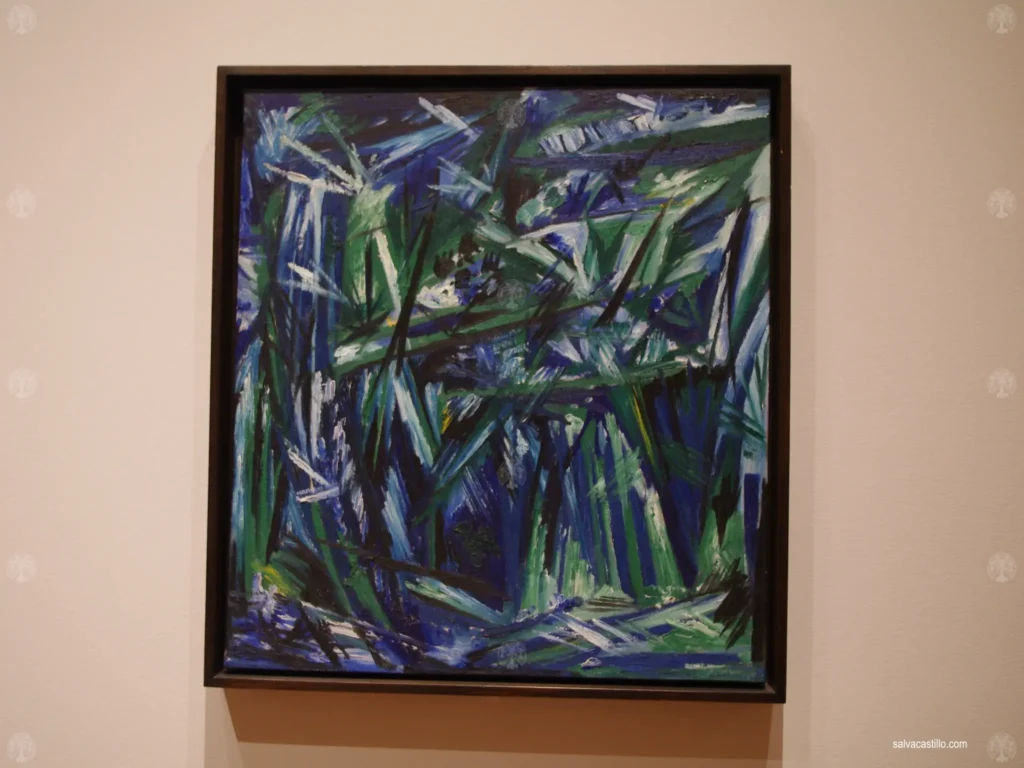



“Glass of Absinthe“, a sculpture created by Pablo Picasso in 1914, constitutes a unique sculptural expression of the artist’s Cubist period. The work presents a three-dimensional representation of a glass of absinthe, a drink associated with the artistic bohemia of the time. Picasso, along with Juan Gris, explored the decomposition and reconstruction of forms in this sculpture, using geometric fragments to represent both the object and the surrounding space. The juxtaposed angular planes create a sense of dynamism and visual dislocation, capturing the essence of Cubist experimentation. “Glass of Absinthe” stands out as a masterful display of Picasso’s innovation in the sculptural realm, fusing his technical prowess with the artistic avant-garde of Cubism to offer a unique reinterpretation of an everyday object.
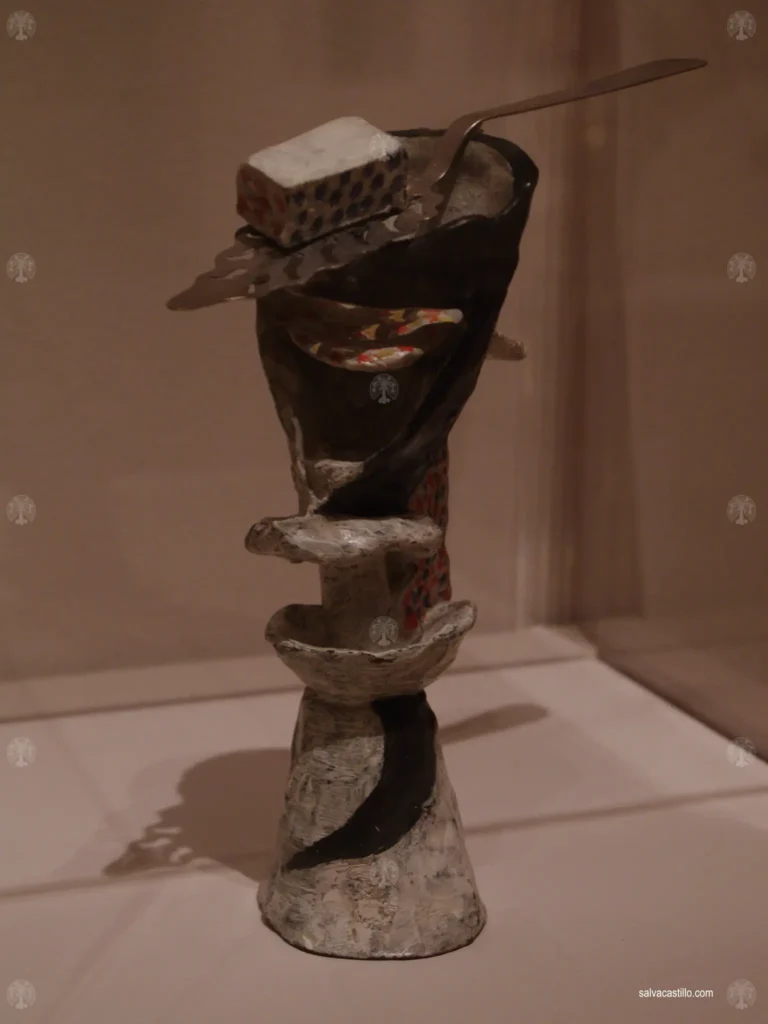
506
“Dance I“, a painting created by Henri Matisse in 1909-1910, stands out as a paradigmatic work of Fauvism and a vibrant expression of human passion and vitality. The work depicts five stylized figures forming a circle in a frenetic and harmonious dance. Matisse uses intense and bold colors, characteristic of Fauvism, to express the raw emotion and energy of the moment. The simplification of forms and the elimination of superfluous detail reflect the influence of African arts on Matisse’s work. “Dance I” is a celebration of bodily expression and human communion, where the amalgam of colors, forms and movement converge in a masterpiece that transcends the artistic conventions of its time, cementing Matisse as a revolutionary in the artistic landscape of the 20th century.



“Woman on a High Stool“, a painting created by Henri Matisse in 1914, stands out as an emblematic work from the artist’s Analytical Cubism period. In this depiction, Matisse challenges visual conventions by breaking down the female figure into geometric shapes and angular fragments. The figure, seated on a high stool, is distinguished by lines and contours that express an extreme simplification, characteristic of Cubist language. Matisse uses a restrained palette, centered on earth tones and grays, to emphasize formal structure and stylistic experimentation. “Woman on a High Stool” shows Matisse’s ability to adapt and explore diverse artistic currents, demonstrating his versatility and significant contributions to the development of modern art.

508
“Network of Stoppages“, a work created by Marcel Duchamp in 1914, represents a revolutionary innovation in the exploration of the possibilities of chance and the role of the artist in artistic creation. Duchamp experiments with the technique of chance by using a thread that falls from a given height onto a canvas previously prepared with patches of paper. The places where the thread lands form the “stops” or detentions, generating a network of abstract and disconcerting forms. This work embodies the Duchampian philosophy of questioning authorship and the artist’s control over the work, introducing elements of chance and contingency into the creative process. “Network of Stoppages” stands out for its conceptual audacity and its seminal role in the development of conceptual art and abstraction, marking a turning point in the evolution of 20th century art.



The work “The Gramineous Bicycle Garnished With Bells The Dappled Fire Damps And The Echinoderms Bending The Spine To Look For Caresses“, created by Max Ernst in 1921, is a paradigmatic example of the artist’s Dadaist and Surrealist approach.
Ernst was fascinated by microscopic images, which began to spread widely in the early 20th century. In this case, he created a repainting on the ambitious scale of traditional oil painting using a commercially available didactic chart. Ernst inverted the found poster, which contains enlarged views of brewer’s yeast cells, and selectively painted a black background. He then painted gears and bands, as well as humanizing details such as eyes, noses, limbs and mustaches, to create a virtual circus of tightrope walkers, clowns and bicyclists. The inscription lends amusing sexual connotations to the hairs, orifices and protuberances of these microorganisms.
